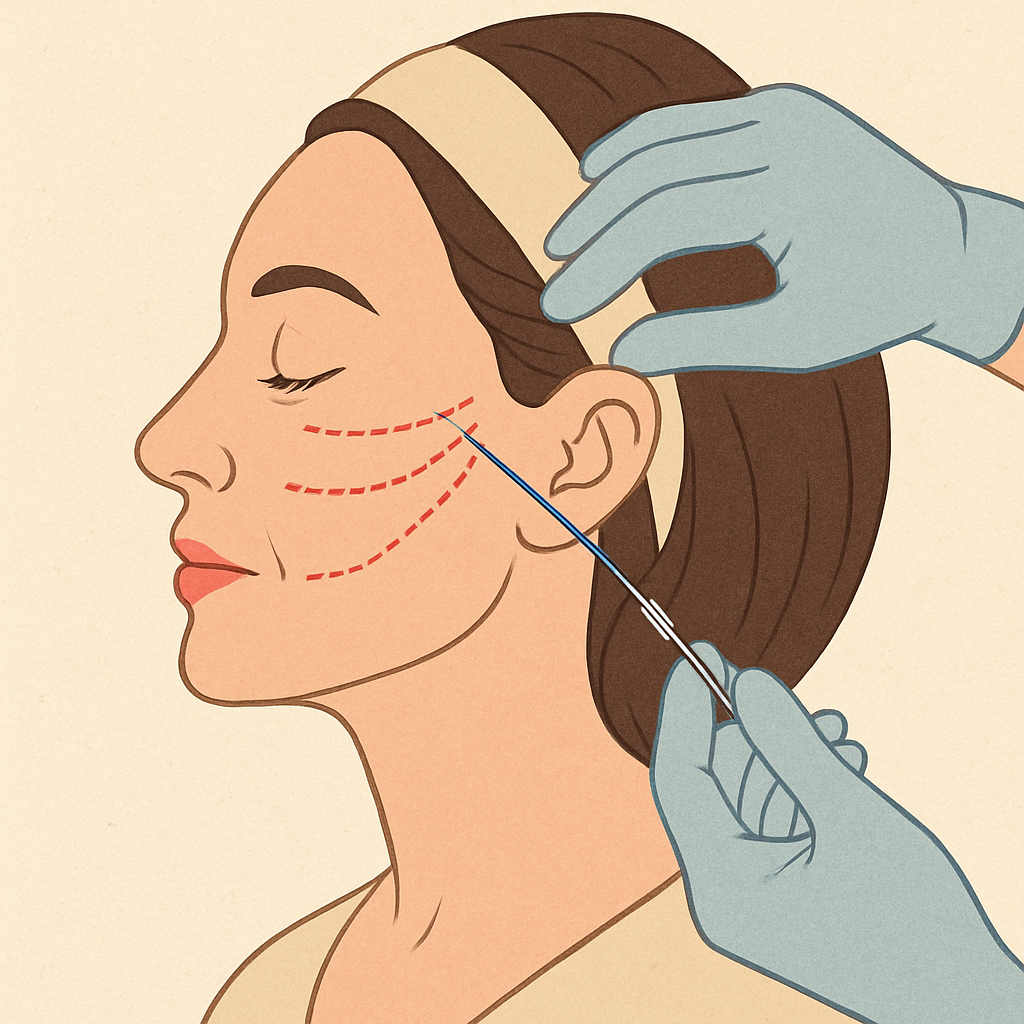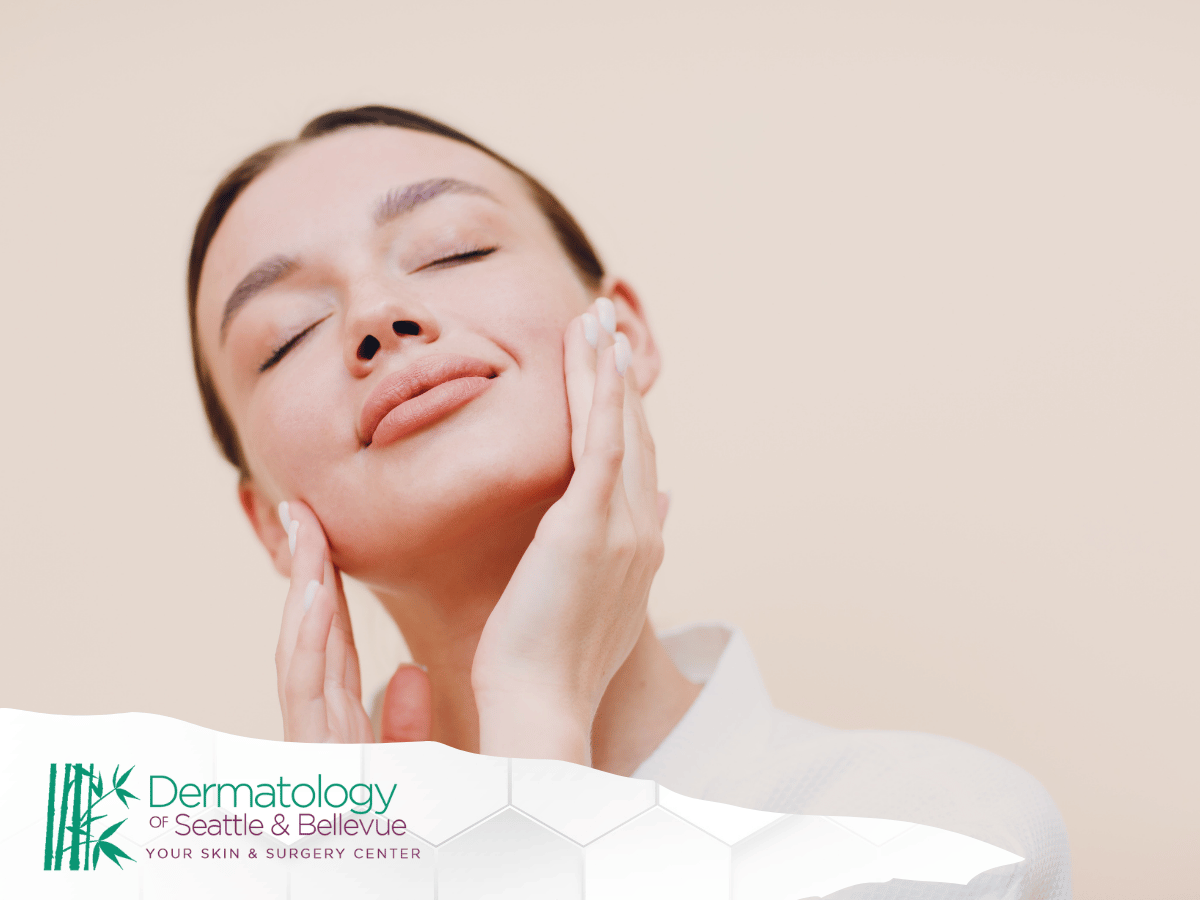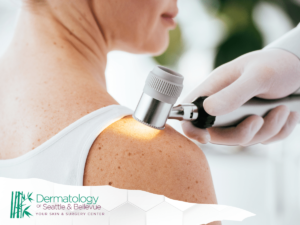A facial thread lift is a minimally invasive procedure that uses PDO threads to lift sagging skin, enhance facial contouring, and support better skin elasticity without surgery. It’s often called a non-surgical facelift because it offers subtle, natural-looking lifting results with far less downtime than a traditional facelift. Thread lifts are ideal for people noticing early signs of aging—mild skin laxity, reduced firmness, and loss of definition—who want noticeable improvement without scars or long recovery time. The procedure works by physically lifting the tissue and stimulating collagen production for months afterward. Dermatology of Seattle helps patients determine if they’re good candidates based on anatomy, expectations, and overall candidate assessment.

Thread lifts use biodegradable PDO sutures to gently reposition sagging tissue. Because the procedure doesn’t involve incisions or major trauma, it appeals to patients wanting facial rejuvenation while preserving a natural look and avoiding lengthy recovery periods. For people wanting subtle enhancement rather than dramatic change, thread lifts can be a great option.
How Do Thread Lifts Work?
PDO threads are inserted beneath the skin to lift sagging tissue and stimulate collagen. They provide immediate lift and continued improvement as collagen builds over time.
The threads act like a supportive scaffold, helping hold the skin in a lifted position. Once placed, PDO threads begin encouraging collagen production—improving firmness, elasticity, and overall texture. This is why the results appear in two phases: an immediate lift followed by gradual, natural enhancement over several months. The regenerated collagen helps maintain the improved contour even after the threads dissolve.
Benefits of a Thread Lift
Thread lifts offer a natural-looking lift, minimal downtime, and no surgical scarring—making them ideal for patients wanting subtle rejuvenation without a full facelift.
- Non-Surgical: Thread lifts don’t require incisions, stitches, or general anesthesia. Because the procedure is minimally invasive, patients avoid scars and the extensive healing process that comes with a traditional facelift. For many people, this makes it a more comfortable entry point into facial rejuvenation.
- Minimal Downtime: Most individuals return to work and normal routines within a few days. Temporary swelling or tenderness is expected but mild, making thread lifts a convenient anti-aging option for people with busy schedules.
- Natural Results: The collagen boost created by PDO threads leads to gradual, natural improvements in facial symmetry, contour, and skin tightening. Instead of a “pulled” or overdone appearance, patients see gentle lift and refinement that blend seamlessly with their natural features.
Who is a Good Candidate?
Ideal candidates have mild to moderate skin sagging, good skin elasticity, and realistic expectations. Thread lifts are best for people wanting subtle, natural-looking lift rather than dramatic surgical results.

Candidate Assessment
- Skin Elasticity: People with some remaining elasticity see the most benefit. PDO threads work with your existing firmness, helping the skin “bounce back” as collagen production increases. Those with moderate elasticity tend to experience smoother, more defined lift.
- Overall Health: Good candidates should be in generally good health with no active infections, bleeding disorders, or major medical concerns. Full medical disclosure ensures the safest approach and helps customize the non-surgical facelift plan.
- Realistic Expectations: Thread lifts offer improvement—not the dramatic, long-term lift of surgery. Patients who understand this difference tend to be happier with their outcomes. It’s ideal for subtle refinement, contour restoration, and mild tightening—not replacing results of a full facelift.
The Procedure: What to Expect
A thread lift is a quick, minimally invasive treatment that uses PDO threads to lift skin. Local numbing is applied, threads are inserted and adjusted, and most appointments take under an hour.

Understanding each step can help ease any anxiety about the process and set realistic expectations.
During the Procedure
- Preparation: The treatment area is numbed using local anesthesia so the procedure feels comfortable. Most patients describe it as pressure or tugging rather than pain.
- Insertion: Using a fine needle or cannula, the provider places PDO threads beneath the skin. Precise placement determines the quality and symmetry of the lift.
- Adjustment: Once inserted, the threads are gently tightened to lift sagging tissue. A skilled practitioner shapes the threads to create natural-looking facial symmetry and contour.
- Completion: Most thread lift sessions take 30–45 minutes. Many patients schedule treatments during lunch breaks because the process is quick and requires minimal disruption.
Post-Procedure Care
After a thread lift, mild swelling, redness, or bruising is common and usually improves within a few days. Proper aftercare helps ensure the best skin tightening results and reduces downtime.
- Avoid strenuous workouts for several days
- Keep your head elevated while sleeping to reduce swelling
- Follow all aftercare instructions from your provider
- Avoid heavy chewing, exaggerated facial movements, or facial massages temporarily
- Use cold compresses if approved by your practitioner
These steps support healing and help your results settle smoothly and symmetrically.
Potential Risks and Considerations
Thread lifts are low-risk when performed by an experienced provider, but mild bruising, swelling, and temporary discomfort may occur. Results last 12–18 months, and understanding longevity, cost, and realistic goals is key to making an informed decision.
Thread lifts are considered safe for most healthy individuals, but like any aesthetic procedure, they come with considerations that should be discussed during a professional candidate assessment.
Risks
- Infection at the insertion sites: Rare but possible—especially if aftercare instructions aren’t followed. Keeping the area clean and avoiding unnecessary touching significantly reduces this risk.
- Minor bruising or swelling: These are the most common side effects and generally resolve within several days. Cold compresses and avoiding strenuous activity can help speed recovery.
- Temporary discomfort: Mild tenderness along the thread path is normal and usually improves quickly. Most patients are comfortable within a few days.
Selecting a qualified, experienced provider dramatically minimizes these risks and ensures safe, natural-looking results.
Considerations
- Longevity: PDO thread lift results typically last 12–18 months as the body gradually absorbs the threads. Many patients schedule maintenance treatments to preserve refreshed facial contouring and skin elasticity.
- Cost: Thread lifts cost less than surgical facelifts but still represent a meaningful investment. Weighing cost against downtime, longevity, and your desired level of aesthetic improvement is important.
Making an Informed Decision
A thorough consultation with a qualified provider ensures the treatment aligns with your goals, medical history, and expectations.
Before moving forward, it’s essential to discuss your aesthetic goals, past medical history, and any concerns with a professional familiar with non-surgical facelift techniques. A detailed consultation helps determine candidacy, clarify expected outcomes, and create a personalized treatment plan.
Evaluating your goals honestly helps ensure satisfaction—thread lifts are ideal for subtle, natural improvements but are not a substitute for surgical lifting. Clear communication with your provider keeps expectations realistic and outcomes rewarding.
Conclusion
Thread lifts offer a minimally invasive way to refresh facial contours with natural results and minimal downtime—ideal for people seeking subtle anti-aging without surgery.
Facial thread lifts provide a compelling option for individuals wanting to enhance their appearance without committing to a full surgical procedure. Understanding how PDO threads work, the benefits, the risks, and who makes an ideal candidate empowers you to decide whether the treatment fits your goals.
For primary care physicians and wellness coaches, offering clear, accurate education about thread lifts helps patients make informed choices and encourages a proactive approach to skin health. By understanding both the possibilities and limitations of thread lifts, individuals can confidently pursue the rejuvenation options that match their needs and lifestyle.
FAQ
How long does a thread lift last?
Most thread lift results last between 12 and 18 months. PDO threads dissolve gradually, but the collagen they stimulate can help maintain lift and improved skin elasticity even after the threads are gone.
Is a thread lift painful?
Most patients describe the treatment as mildly uncomfortable rather than painful. Local anesthesia is used to keep the procedure comfortable, and any post-treatment soreness typically resolves within a few days.
Can a thread lift replace a facelift?
No. Thread lifts offer subtle, natural improvement, while surgical facelifts provide more dramatic and long-lasting results. A thread lift is ideal for mild to moderate skin laxity—not severe sagging.
How soon can I return to normal activities after a thread lift?
Many patients return to daily activities within 24–72 hours. Mild swelling or bruising is normal. Avoid strenuous exercise and heavy facial movements for several days to allow threads to settle.
Are PDO threads safe?
Yes, PDO threads are FDA-cleared, biodegradable, and widely used in aesthetic medicine. When performed by an experienced provider, thread lifts are considered very safe with a low risk of complications.
If you’re considering a thread lift or want to explore non-surgical options to refresh your appearance, our dermatology team at Dermatology of Seattle is here to help. With locations in Seattle, Bellevue, and Burien, we provide personalized assessments to determine whether PDO thread lifting is the right approach for your goals.
Schedule a consultation to get expert guidance and a treatment plan tailored to your skin, lifestyle, and aesthetic vision.





